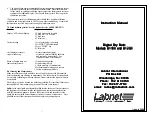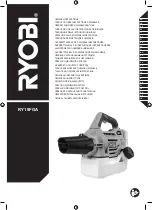
P5514, P5514-V & P5514-EP
Users Manual
6
Operation
W
Warning
Do not exceed the maximum working pressure of the
instrument (stated on the instrument label).
1.
Turn the screw press in to generate pressure.
2.
Allow a few moments for the system to stabilize before taking any readings,
especially after large changes in system pressure.
Note
Large, sudden changes in pressure will cause the system temperature to
rise or fall, which can cause instrument readings to change as the fluid in
the system expands or contracts, thus increasing or decreasing the
pressure.
3.
Compare the reading of the gauge under test with that of the master gauge.
4.
For the next higher calibration point, repeat from Priming, Step 1.
5.
To measure reducing pressures, turn the screw press out (counter-clockwise).
6.
Depressurize the system by turning the screw press FULLY OUT, then open the
reservoir valve
W
Caution
Never release the system pressure by using the reservoir valve
alone, as sudden depressurization will “shock” the system,
which may cause damage to sensitive instruments attached
to it.
Maintenance and Servicing
The Figures on the following pages detail the components of each assembly, together
with the relevant part numbers. Where “ASSY” appears as a part number, this indicates
that this particular component is associated with other components in an assembly for
replacement purposes.
Before beginning any maintenance, remove any instruments that may be mounted to the
test pump, and drain the fluid from the system.
Table 4. Seal Kit - Part Numbers
Model
Seal Kit P/N
P5514 3891113
P5514-V 3891124
P5514-EP 3891136
Screw Press Seals
1.
Turn the screw press out so that there is a distance of at least 1” / 2.5cm between the
large union nut at the end of the barrel and the capstan hub.
2.
Unscrew the union nut and withdraw the lead screw assembly (24) from the barrel,
taking care not to drop the rambler (22).
3.
Inspect the seals for signs of wear or damage, replace as necessary.






































